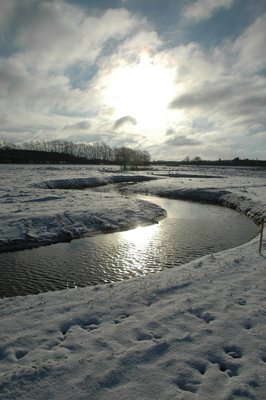Aim of the study
The aim of the study was to evaluate the effect of river restoration on hydrological and biogeochemical processes. More specifically, the consequences of the restoration on ground- and surface water quality were investigated with a focus on nitrogen and phosphorus cycles. Also, the impact of the restoration for greenhouse gas emission was assessed.
Study site
The Odderbæk stream is located in Jutland, Denmark and is a second-order stream (sensu Strahler) which drains an area of 27.6 km² and flows into the lake Kulsø. The land use is mostly agriculture (68%) and forestry (31%). The soil type in the project area is mostly sandy except at some few locations close to the stream where layers of decomposed peat can be found.
Restoration Project
In 2009, the municipality of Vejle initiated a restoration project aiming at decreasing phosphorus and nitrogen load to the downstream lake (Lake Kulsø). In December 2010, an approx. 2-km channelized segment of the river was restored by recreating meanders, raising the streambed and disconnecting the tiles drains. Four constructed wetlands collecting water from drains were also established. The riparian areas were converted from arable land into grazing meadow and wetland. The restoration work led to an increase in the groundwater table and enabled overbank flooding during period of high flow.

Odderbæk Stream just after restoration
Photo: Ditte Forsmann